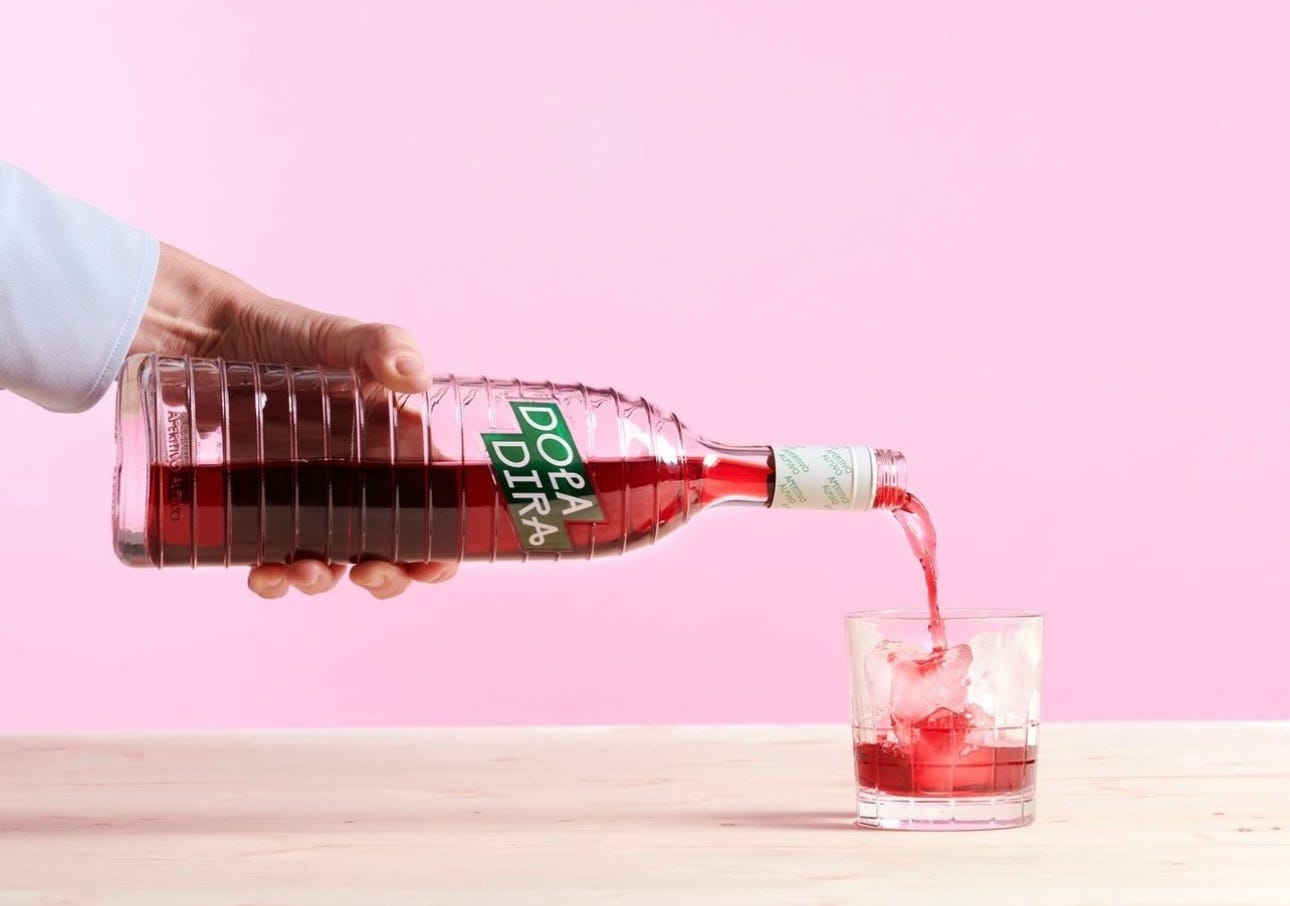The Lowdown
Brought to You by Doladira
Welcome to The Lowdown, an expanded edition of what I’m drinking, eating, reading, writing, watching, and listening to. This paid subscriber exclusive is sent out on select Fridays.
Today’s LAST CALL dispatch is free to all readers thanks to the generous support of Doladria.
“I created Doladira to have the drink I always wanted but could never find. An aperitivo with real ingredients, less sugar, and a perfect balance of bitterness, acidity, herbaceousness, and salinity. There is a lot hiding in the mountains, especially if you know where to look. It’s fresh, fresh, fresh and a happy consequence is that it makes you thirsty for more. This is the culmination of my work in the Alps over the last decade.”
—Meredith Erickson, Co-Founder of Doladira
A collaboration between Meredith Erickson and Richard Betts, Doladira was inspired by Erickson’s extensive time in the Alps researching and writing her book, Alpine Cooking. Her alpine aperitivo’s name is a combination of “Dolomites
and “enrosadira,” the Italian word used to describe the sensation when the sun hits the Dolomites and the mountains and sky transform into a fantastic pink hue.
The transportive Doladira instantly evokes the crisp sensation of the Alps and its refreshing, round, and herbaceous profile is composed of rhubarb, gentian, rosemary, elderflower, plum, and pine, and its all-natural hue is courtesy of black carrot and rhubarb. At 22% alcohol by volume, its a low-ABV option for enjoying on the rocks, in a spritz, or countless cocktails such as a classic Negroni.
Find Doaldira near you, and use promo code DRINKDOLADIRA to receive free shipping when you when you order from Reservebar.
The Art of the Shakerato with Doladira



The classic Shakerto can be as simple as shaking up your favorite apertivo bitter or amaro with ice, but there are factors to consider in the art of transforming a single-ingredient drink into something with the character of a complex cocktail.
I recently spent some time with Eloy Pacheco, the head bartender at New York’s Caffe Dante, to try three different shaking styles to demonstrate how temperature, dilution, and shaking technique play a key role in the the profile and taste of a Doladira Shakerato.
In all three methods, 2 ounces of Doladira were added to a cocktail shaker and served in a frozen Nick and Nora glass. All of the Doladira Shakeratos resulted in a 1/2-inch layer of foam with a pinkish hue but, as is this case with many red bitters, the bubbles quickly dissipated bringing that level down to a thin layer.
Hard Shake
Added 2 ounces of Doladira to a mixing tin filled with ice. Shook for 30 seconds then fine-strained into a chilled Nick and Nora glass. The traditional red hue of Doladira was a little washed out due to the extra water in the drink.
Reverse Dry Shake
Added 2 ounces of Doladira to a mixing tin filled with ice. Shook for 10-15 seconds. Strained out the ice and shook again without ice for 5-10 seconds, then fine-strained into a chilled Nick and Nora glass.
Whip Shake
Added 2 ounces of Doladira to a mixing tin with a palmful of pebble ice and quickly shook until the ice was fully diluted, then poured directly into a chilled Nick and Nora glass. This technique is often used in tiki-style drinks or drinks served over crushed ice to incorporate ingredients while minimizing dilution.
The Results
When it comes to the Shakerato and the three different “Goldilocks and the Three Bears” approaches, the Hard Shake increased the volume of the drink by almost a full ounce but that also watered it down. While they use a Hard Shake at Dante for their house Shakerato, Pacheco noted they compensate for the extra dilution by invigorating the drink with subtle layers of additional flavor by way of orange bitters, a 20% saline solution, and a bit of citric acid. He also advocates expressing and garnishing with an orange peel for any style of Shakerato.
I tend to see the Reverse Dry Shake used the most by bartenders. It still properly chills the liqueur and the time without ice helps with additional aeration. I came up making drinks using the standard Dry Shake (shaking first without ice, then adding ice) and still fumble at times with the removing the ice stage of the Reverse Dry Shake at home. Most bartenders just strain the shaken liqueur into a third tin then get back to shaking, but if you only have two shaking tins, just hold back the ice by straining into the opposite tin, then dump the ice, and get back to shaking.
The low-dilution Whip Shake definitely yields the most pronounced flavor and will likely provide the best frothy head. I’m definitely seeing move more and more in cocktail bars. And if you don’t have pebble ice or crushed ice at home just put in one small ice cube.
Ultimately, the Doladira Shakerato that was made via the Whip Shake method won us both over. It was the most striking, color-wise, was cold enough to feel like a cocktail, and tasted most like Doladira’s “in the bottle” flavor profile
Try giving these methods a shake to determine which version works best for you.
Drinking
Vintage Bitter Branca (Red Hook Tavern)
I think I’ve put Faccia Brutto Spirits founder Patrick Miller on blast by saying he always shows up with a “surprise bottle” whenever we have the chance to meet up for drinks. But once again he did not disappoint when we recently grabbed dinner at the bar at Red Hook Tavern when he pulled a recent acquisition from his tote—a 1960 bottle of Bitter Branca, a since discontinued offering from Fratelli Branca.




